Discover 20 hidden attractions, cool sights, and unusual things to do in Dartmoor National Park (United Kingdom). Don't miss out on these must-see attractions: Okehampton Castle, Lydford Castle, and St Andrew's Church. Also, be sure to include Canonteign Falls in your itinerary.
Below, you can find the list of the most amazing places you should visit in Dartmoor National Park (England).
Table of Contents
Okehampton Castle
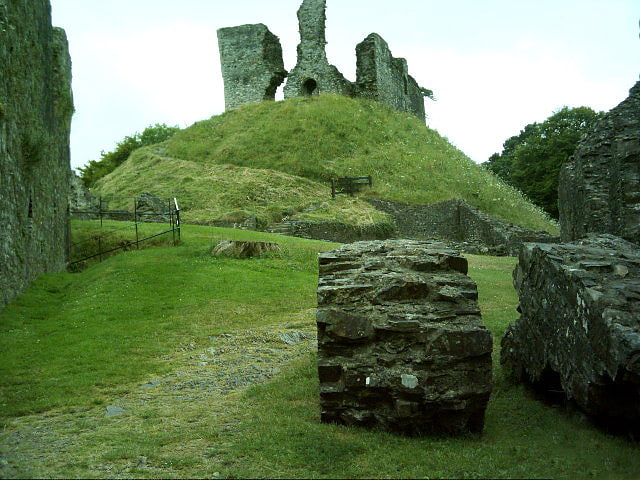
Castle in England. Okehampton Castle is a medieval motte and bailey castle in Devon, England. It was built between 1068 and 1086 by Baldwin FitzGilbert following a revolt in Devon against Norman rule, and formed the centre of the Honour of Okehampton, guarding a crossing point across the West Okement River. It continued in use as a fortification until the late 13th century, when its owners, the de Courtenays, became the Earls of Devon. With their new wealth, they redeveloped the castle as a luxurious hunting lodge, building a new deer park that stretched out south from the castle, and constructing fashionable lodgings that exploited the views across the landscape. The de Courtenays prospered and the castle was further expanded to accommodate their growing household.
The de Courtenays were heavily involved in the 15th century Wars of the Roses and Okehampton Castle was frequently confiscated. By the early 16th century the castle was still in good condition, but after Henry Courtenay was executed by Henry VIII the property was abandoned and left to decay, while the park was rented out by the Crown. Parts of the castle were reused as a bakery in the 17th century, but by the 19th century it was completely ruined and became popular with Picturesque painters, including J. M. W. Turner. Renovation work began properly in the 20th century, first under private ownership and then, more extensively, after the castle was acquired by the state. In the 21st century it is controlled by English Heritage and operated as a tourist attraction.[1]
Address: Castle Ln., EX20 1JA Devon
Lydford Castle

Medieval castle. Lydford Castle is a medieval castle in the town of Lydford, Devon, England. The first castle in Lydford, sometimes termed the Norman fort, was a small ringwork built in a corner of the Anglo-Saxon fortified burh in the years after the Norman conquest of England. It was intended to help control Devon following the widespread revolt against Norman rule in 1068. The Norman fort had been abandoned by the middle of the 12th century.
The second castle in Lydford was constructed in 1195 following a wave of law and order problems across England. It included a stone tower with a surrounding bailey, and rapidly became used as a prison and court to administer the laws in the Forest of Dartmoor and the Devon stannaries. The tower was rebuilt in the middle of the 13th century, probably in the 1260s by Richard, the Earl of Cornwall. It was redesigned to resemble a motte and bailey castle, an antiquated design for the period but one that was heavily symbolic of authority and power. In 1342 the castle, still being used as a prison and courtroom, passed to the Duchy of Cornwall, who owned it until the 20th century.
The castle was repeatedly renovated and then left to deteriorate, so its condition varied considerably over time. Nonetheless, other than a period during the English Civil War and the Restoration in the 17th century, Lydford Castle played an important part in stannary and forest administration until the 19th century. The castle acquired a bad reputation for injustice in the 14th century, and complaints about "Lydford Law" persisted for centuries. In the early 19th century, however, Dartmoor Prison was constructed, and Lydford ceased to be the centre for legal administration. The castle had fallen into ruin by the middle of the century.
In 1932, Lydford Castle passed into the hands of the state, and in the 21st century is run by English Heritage as a tourist attraction. Historian Andrew Saunders has described the castle as architecturally significant, being "the earliest example of a purpose-built gaol" in England. The earthworks of the Norman fort are owned by the National Trust and are open to the public.[2]
St Andrew's Church

St Andrew's Church, Moretonhampstead is a Grade I listed parish church in the Church of England Diocese of Exeter in Moretonhampstead, Devon.[3]
Canonteign Falls
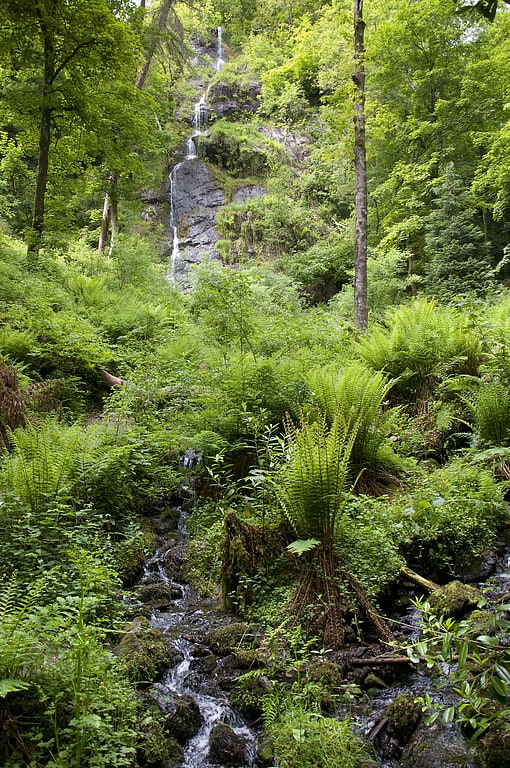
Tourist attraction in England. Canonteign Falls is a waterfall in the historic tything of Canonteign in the Teign Valley and Dartmoor National Park near Chudleigh, South Devon, England.
It is 220 feet (70 m) high and is one of the highest waterfalls in England. It was created in 1890 by diverting a stream over the edge of a cliff.[4]
Becky Falls
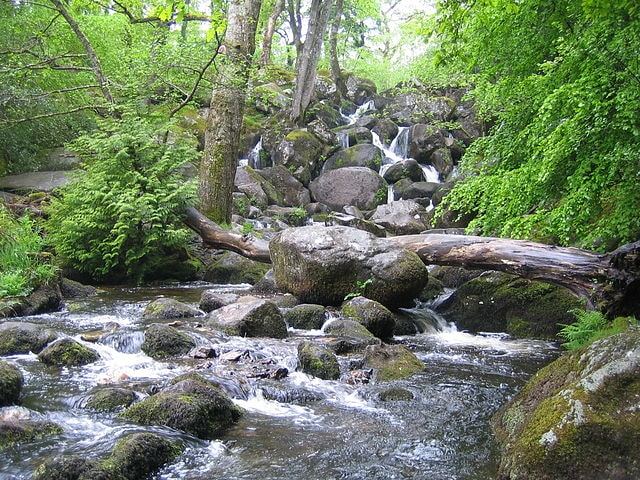
Tourist attraction in Manaton, England. Becky Falls, originally known as Becka Falls, is a tourist attraction in Dartmoor, England, centered on a waterfall of around 20 metres down a boulder-strewn bed. In addition to the waterfall as the centrepiece, there is a woodland park with features such as a children's zoo, woodland trail, and crafts.[5]
Grimspound
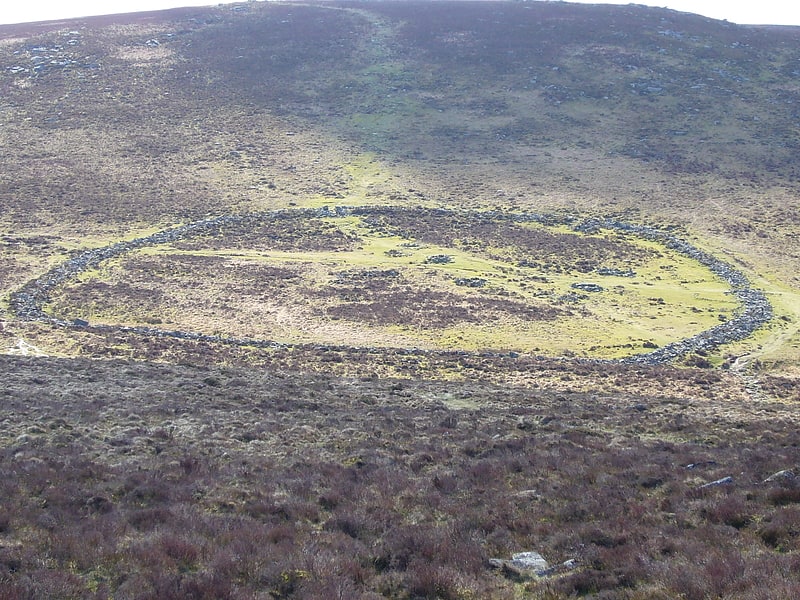
Historical landmark in England. Grimspound is a late Bronze Age settlement, situated on Dartmoor in Devon, England. It consists of a set of 24 hut circles surrounded by a low stone wall. The name was first recorded by the Reverend Richard Polwhele in 1797; it was probably derived from the Anglo-Saxon god of war, Grim.
In 1893 an archaeological dig was carried out by the Dartmoor Exploration Committee, which recorded many details of Grimspound as well as, controversially, making a reconstruction of the site.[6]
Hound Tor

Tor in England. Hound Tor is a tor on Dartmoor, Devon, England and is a good example of a heavily weathered granite outcrop. It is easily accessible, situated within a few minutes from the B3387 between Bovey Tracey and Widecombe-in-the-Moor.
The site is administered by Dartmoor National Park Authority for English Heritage as it includes the ruins of a medieval village, alongside prehistoric works of stone construction nearby.[7]
Address: Dartmoor National Park, Dartmoor National Park
Hembury Castle
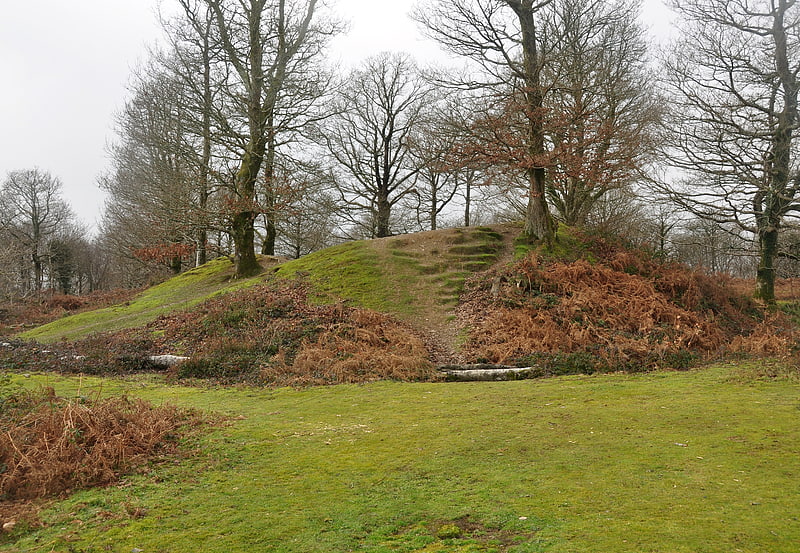
Hembury Castle is an Iron Age hillfort about a mile north-west of the village of Buckfast on the south-eastern edge of Dartmoor in Devon, England. The fort is about 178 metres above sea level on a promontory between the River Dart on the east and the Holy Brook, south-west. The slope down to the River Dart is very steep and is covered by Hembury Woods which is now a Site of Special Scientific Interest.
The fort is said to cover about seven acres and it is surrounded by a prominent rampart and ditch. It is one of several Iron Age forts on the eastern edge of Dartmoor, others include Holne Chase Castle, Wooston Castle, Cranbrook Castle and Prestonbury Castle. Inside the fort, on the western side, is an 11th- or 12th-century motte with a surrounding narrow inner bailey. The ramparts of the earlier hillfort may have been used as the outer bailey of the castle. The entire site has legal protection as a scheduled monument.
The first documentary reference to Hembury Castle is in the 13th-century cartulary of nearby Buckfast Abbey, where it is referred to as vetus castellum quod dicitur Hembire. The name probably derives from Old English hean byrig, "at the high burh".
A legend relates that the fort was held by the Danes, but it was taken from them by a stratagem. Some local women allowed themselves to be captured by the Danes and taken into the fort, but in the night when their captors were in a drunken sleep, the women rose, killed them and let in their countrymen.[8]
Burrator Reservoir
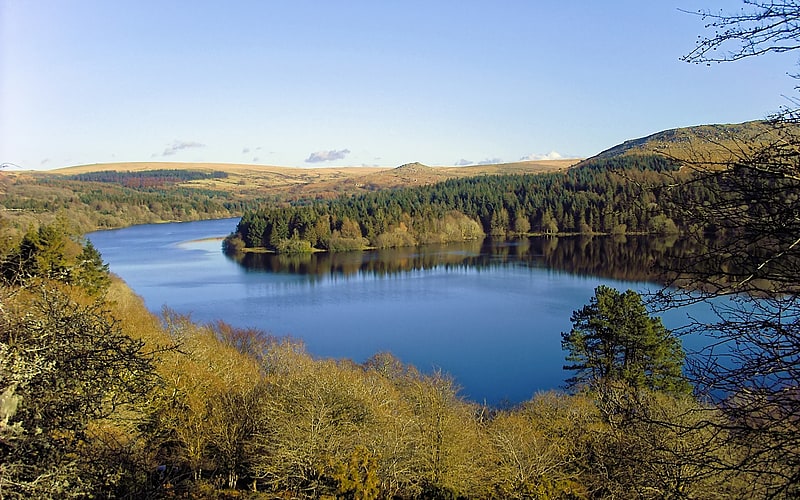
Reservoir in England. Burrator Reservoir is a reservoir on the south side of Dartmoor in the English county of Devon. It is one of a number of reservoirs and dams that were built over the course of the 19th and 20th centuries in the area now covered by Dartmoor National Park to supply drinking water to the city of Plymouth and other rapidly growing towns in the surrounding lowlands.
Burrator Reservoir was completed in 1898, and the reservoir was expanded in 1929. The reservoir was built under the supervision of Edward Sandeman (1862-1959), the Water Engineer for Plymouth. The reservoir has two dams, the Burrator Dam, which is built across the River Meavy at Burrator Gorge at the south-western end, and the Sheepstor Dam built on a dividing ridge between the Meavy and Sheepstor Brook at the south-eastern end. The Burrator Dam was the first of the two to be built, with construction starting on 9 August 1893. It is the more massive of the two dams, constructed of concrete faced with granite blocks. The Sheepstor Dam was built in 1894 and is an earth embankment with a core wall of puddled clay above the original ground level, with a concrete section below ground. The reservoir was officially opened on 21 September 1898.
In 1923 it was decided to enlarge the capacity from 668 million gallons to 1,026 million. This was achieved by raising the height of both dams by 10 feet. Work began in December 1923, and a temporary suspension bridge was built near Burrator Dam to carry traffic while the work proceeded. The reservoir was officially re-opened on 12 September 1928.
In the 1930s the watershed on Dartmoor for the reservoir was stated to be 5,360 acres. The present-day area of the reservoir at overflow level is about 150 acres. The edges of the reservoir are planted with commercial forests.
The reservoir is now managed by the South West Lakes Trust, and is a popular spot for leisure activities including walking, cycling and fishing.[9]
Meldon Viaduct

Viaduct in England. Meldon Viaduct carried the London & South Western Railway across the West Okement River at Meldon on Dartmoor in Devon, South West England. The truss bridge, which was constructed from wrought iron and cast iron not stone or brick arches, was built under the direction of the LSWR's chief engineer, WR Galbraith. After taking three years to build, the dual-tracked bridge opened to rail traffic in 1874. Usage was limited to certain classes of locomotive because the viaduct had an axle load limit. Although regular services were withdrawn in 1968, the bridge was used for shunting by a local quarry. In the 1990s the remaining single line was removed after the viaduct was deemed to be too weak to carry rail traffic.
The crossing is now used by The Granite Way, a long-distance cycle track across Dartmoor. The viaduct, which is a scheduled monument, is now one of only two such surviving railway bridges in the United Kingdom that uses wrought iron lattice piers to support the cast iron trusses, the other is the Bennerley Viaduct between Nottinghamshire and Derbyshire.[10]
Church of Saint Pancras
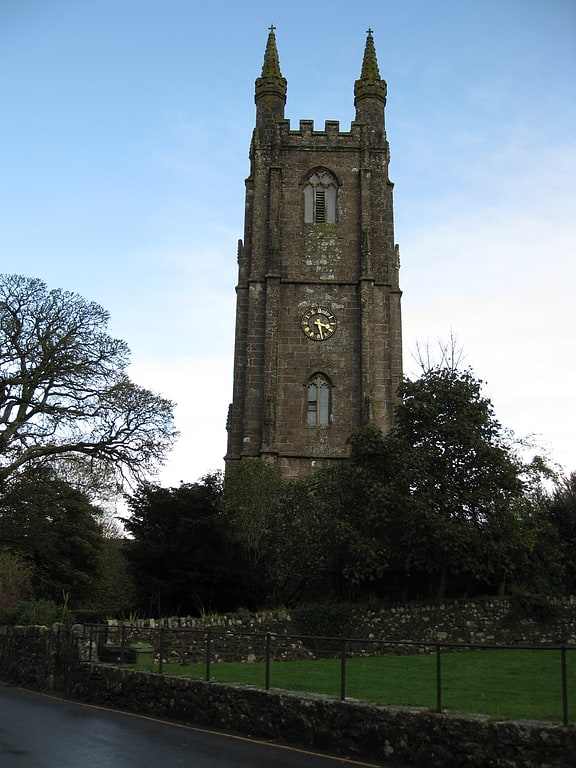
Anglican church in Widecombe-in-the-Moor, England. The Church of Saint Pancras is a Church of England church in Widecombe-in-the-Moor, Devon, England. It is also known as the Cathedral of the Moor.
It has received the nickname "Cathedral of the Moor" because of its 120-foot tower and relatively large capacity for such a small village. The church was originally built in the fourteenth century, in the Perpendicular (late Gothic) style, using locally quarried granite. It was enlarged over the following two centuries, partly on the proceeds of the local tin-mining trade. Inside, the ceiling is decorated with a large number of decorative roof bosses, including the tinner's emblem of a circle of three hares (known locally as the Tinners' Rabbits).
The church was badly damaged in the Great Thunderstorm of 1638, apparently struck by ball lightning. An afternoon service was taking place at the time, and the building was packed with approximately 300 worshippers. Four of them were killed, around 60 injured. According to local legend, the Great Thunderstorm was caused by the village being visited by the Devil.
The size of the parish meant that, for centuries, families were obliged to walk for miles to go to church at Widecombe every Sunday. The task was even more challenging when it came to burying their dead, whose coffins had to be carried over rough ground and both up and down exceptionally steep hills. Halfway up Dartmeet Hill, for example, lies the Coffin Stone, close to the road, where the body would be placed to allow the bearers to take a rest. The rock is split in two along its length. Local legend has it that the body of a particularly wicked man was laid there. God took exception to this, and struck the stone with a thunderbolt, destroying the coffin and splitting the stone in two.
Beatrice Chase, writer known during the first half of the 20th century for her Dartmoor-based novels, is buried in the churchyard.[11]
Bowerman's Nose
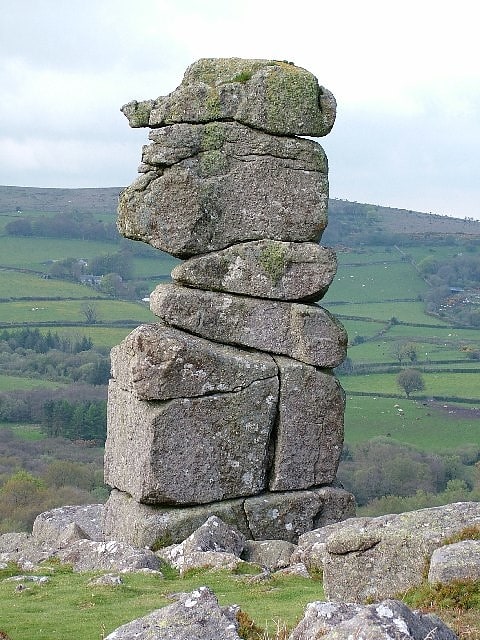
Tor in England. Bowerman's Nose is a stack of weathered granite on Dartmoor, Devon, England. It is situated on the northern slopes of Hayne Down, about a mile from Hound Tor and close to the village of Manaton at grid reference SX742805. It is about 21.5 feet high and is the hard granite core of a former tor, standing above a 'clitter' of the blocks that have eroded and fallen from it.[12]
Jay's Grave

Place of burial. Jay's Grave is supposedly the last resting place of a suicide victim who is thought to have died in the late 18th century. It has become a well-known landmark on Dartmoor, Devon, in South-West England, and is the subject of local folklore, and several ghost stories.
The small burial mound is at the side of a minor road, about 1 mile (1.6 km) north west of Hound Tor, at the entrance to a green lane that leads to Natsworthy. Fresh flowers are regularly placed on the grave, although no-one admits to putting them there.[13]
Yarner Wood & Trendlebere Down
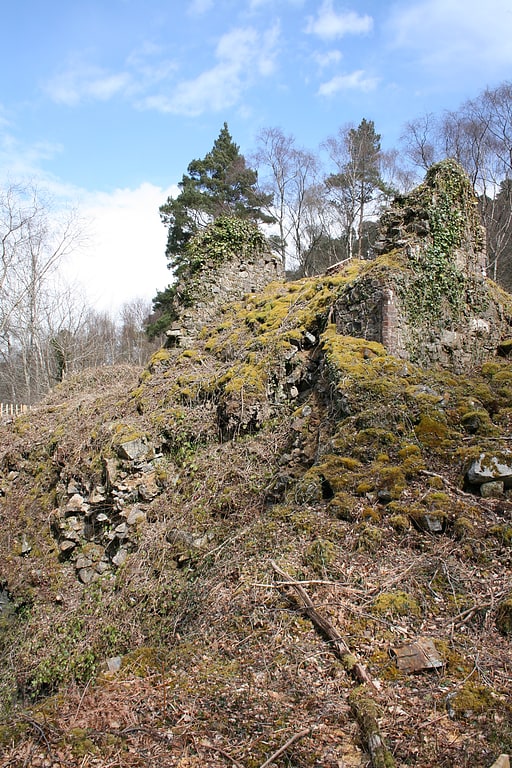
Yarner Wood & Trendlebere Down in Dartmoor, Devon, England is a woodland managed by Natural England. The woodland is part of the East Dartmoor Woods and Heaths National Nature Reserve. The entire area is 777 acres while Yarner Wood is 365 acres. Since 1985 the site has been designated a Site of Special Scientific Interest. Many types of tree grow in Yarner Wood including oak, birch, scots pine, larch and beech. It is home to buzzards, sparrow hawks, nightjars and pied flycatchers.
From 1857 to 1862, a copper mine operated in Yarner Wood and extracted ore which gave over 2000 tonnes of copper.[14]
Moretonhampstead
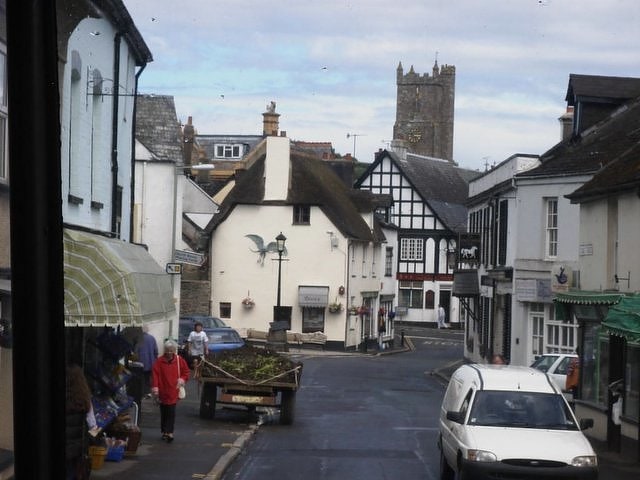
Town in England. Moretonhampstead is a market town, parish and ancient manor in Devon, situated on the north-eastern edge of Dartmoor, within the Dartmoor National Park. The parish now includes the hamlet of Doccombe, and it is surrounded clockwise from the north by the parishes of Drewsteignton, Dunsford, Bridford, Bovey Tracey, Lustleigh, North Bovey and Chagford.
At the 2011 census the population of the parish was 1,703, and Moorland electoral ward, in which Moretonhampstead lies, had a population of 2,806. The parish church is dedicated to St. Andrew. Moretonhampstead is twinned with Betton in France.[15]
Address: Court Street, Dartmoor National Park
Newbridge
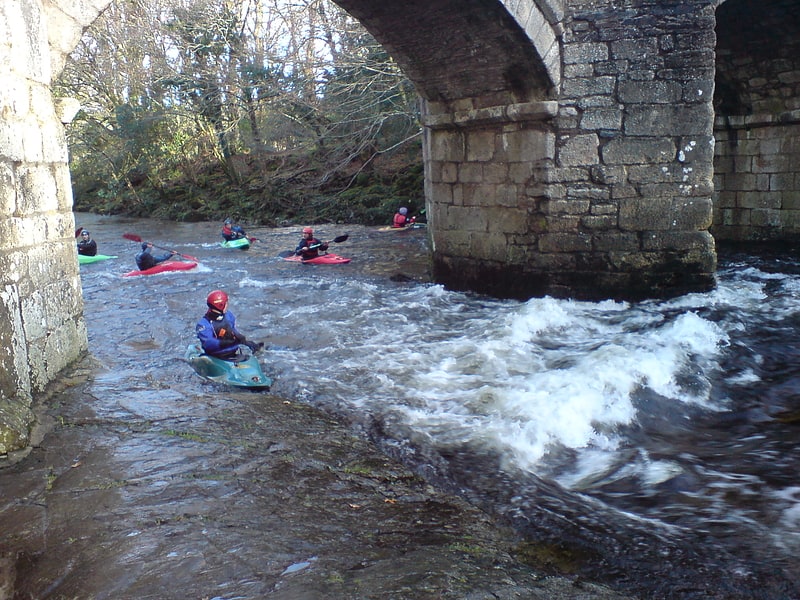
Bridge in England. Newbridge or New Bridge is a Grade II* listed medieval bridge over the River Dart, Dartmoor, Devon, England.
It is on the road between Ashburton and Two Bridges, and connects Aish Tor to Holne Chase. A car park is located next to the bridge and is often frequented by families, walkers, and watersports enthusiasts, though the narrowness of both this bridge and Holne Bridge means that the size of vehicles is restricted on this road.
The bridge is constructed of local granite and has three semicircular arches, one smaller than the others. It was built in 1413, at the same time as the nearby Holne Bridge was reconstructed. The two pillars have cutwaters to deflect the flow of water; these extend up to road level and provide triangular refuges for pedestrians.[16]
High Willhays
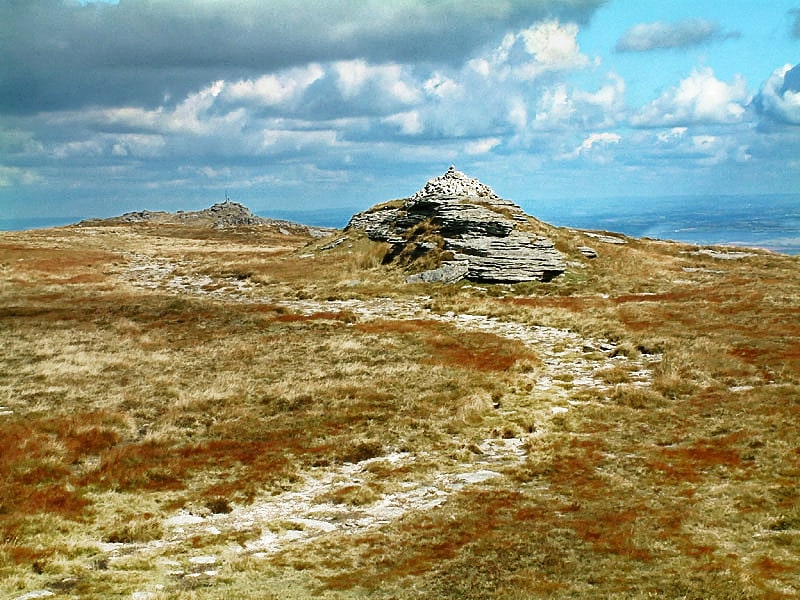
High Willhays, or according to some authorities High Willes, is the highest point on Dartmoor, Devon, at 621 metres above sea level, and the highest point in Southern England.[17]
Cosdon Hill
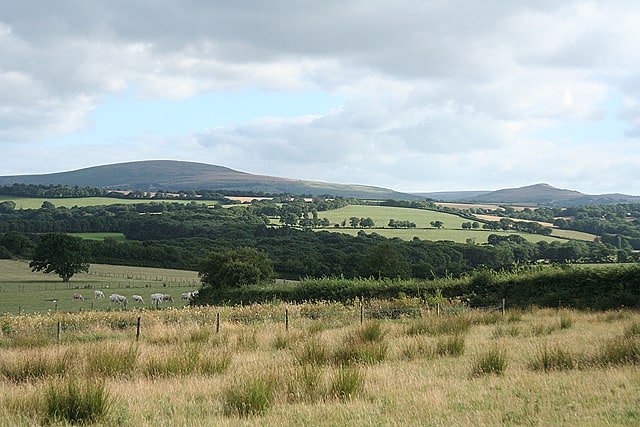
Cosdon Hill, also called Cosdon Beacon, or Cawsand Beacon, is one of the highest hills on Dartmoor, in Devon, England. It has numerous traces of prehistoric occupation.[18]
Spinsters' Rock
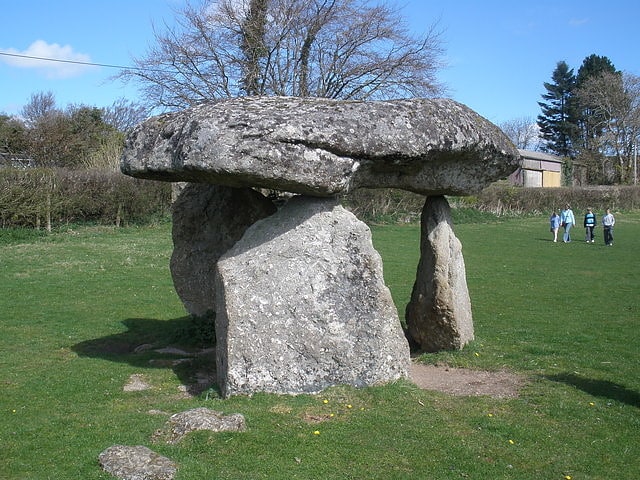
Tourist attraction in England. Spinsters' Rock is a Neolithic dolmen near Drewsteignton in Devon. It is situated on Shilstone Farm west of the village. It is near the A382 road. The dolmen consist of three granite supports rising to between 1.7 and 2.3 metres surmounted by a capstone measuring 4.5 by 3.1 metres. The dolmen collapsed in 1862 but was restored in the same year. No finds were recorded.
There are 18th-century antiquarian reports of nearby stone circles and alignments. These reports are considered to be of "dubious accuracy". There are some free-standing stones located nearby, although only two align with Spinsters' Rock.[19]
Gidleigh Castle
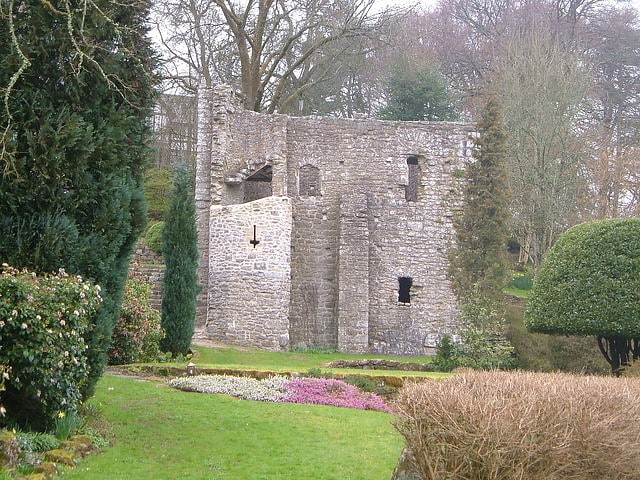
Gidleigh Castle was the manor house of the manor of Gidleigh on the north-eastern edge of Dartmoor, about two miles north-west of the town of Chagford, Devon, England.[20]